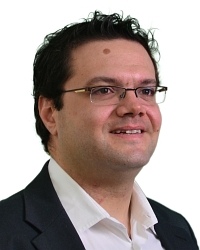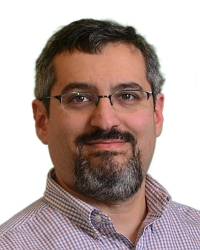TR2021-006
Learning-based Extended Object Tracking Using Hierarchical Truncation Measurement Model with Automotive Radar
-
- , "Learning-based Extended Object Tracking Using Hierarchical Truncation Measurement Model with Automotive Radar", IEEE Journal of Selected Topics in Signal Processing, DOI: 10.1109/JSTSP.2021.3058062, Vol. 15, No. 4, pp. 1013-1029, February 2021.BibTeX TR2021-006 PDF
- @article{Xia2021feb,
- author = {Xia, Yuxuan and Wang, Pu and Berntorp, Karl and Svensson, Lennart and Granstrom, Karl and Mansour, Hassan and Boufounos, Petros T. and Orlik, Philip V.},
- title = {{Learning-based Extended Object Tracking Using Hierarchical Truncation Measurement Model with Automotive Radar}},
- journal = {IEEE Journal of Selected Topics in Signal Processing},
- year = 2021,
- volume = 15,
- number = 4,
- pages = {1013--1029},
- month = feb,
- doi = {10.1109/JSTSP.2021.3058062},
- issn = {1941-0484},
- url = {https://www.merl.com/publications/TR2021-006}
- }
- , "Learning-based Extended Object Tracking Using Hierarchical Truncation Measurement Model with Automotive Radar", IEEE Journal of Selected Topics in Signal Processing, DOI: 10.1109/JSTSP.2021.3058062, Vol. 15, No. 4, pp. 1013-1029, February 2021.
-
MERL Contacts:
-
Research Areas:
Abstract:
This paper presents a data-driven measurement model for extended object tracking (EOT) with automotive radar. Specifically, the spatial distribution of automotive radar measurements is modeled as a hierarchical truncated Gaussian (HTG) with structural geometry parameters that can be learned from the training data. The HTG measurement model provides an adequate resemblance to the spatial distribution of real-world automotive radar measurements. Moreover, large-scale radar datasets can be leveraged to learn the geometry-related model parameters and offload the computationally demanding model parameter estimation from the state update step. The learned HTG measurement model is further incorporated into a random matrix based EOT approach with two (multi-sensor) measurement updates: one is based on a factorized Gaussian inverseWishart density representation and the other is based on a RaoBlackwellized particle density representation. The effectiveness of the proposed approaches is verified on both synthetic data and real-world nuScenes dataset over 300 trajectories



